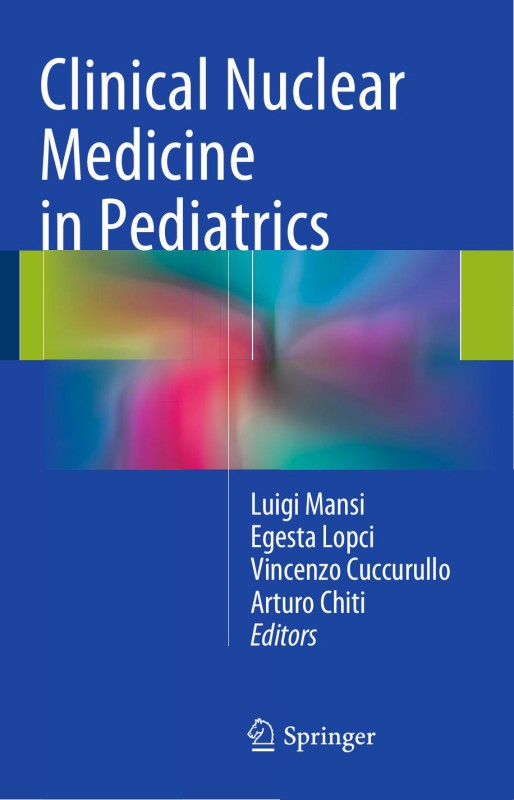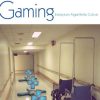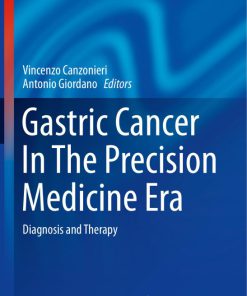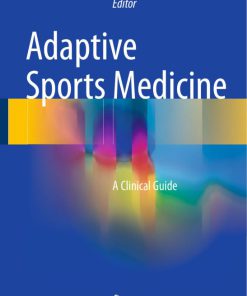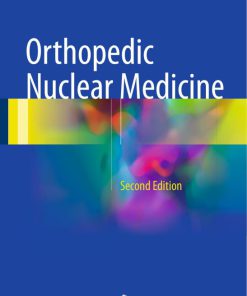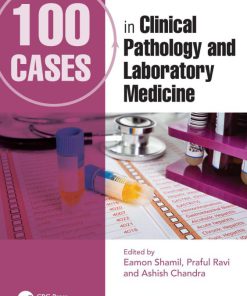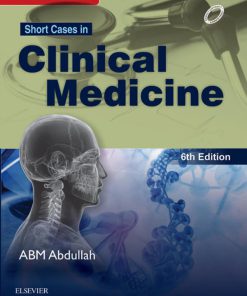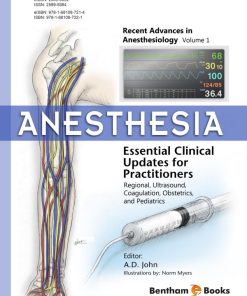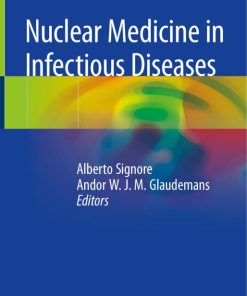Clinical Nuclear Medicine in Pediatrics 1st Edition by Luigi Mansi, Egesta Lopci, Vincenzo Cuccurullo, Arturo Chiti ISBN 3319213717 9783319213712
$50.00 Original price was: $50.00.$25.00Current price is: $25.00.
Authors:Unknown , Author sort:Unknown , Published:Published:Oct 2015
Clinical Nuclear Medicine in Pediatrics 1st Edition by Luigi Mansi, Egesta Lopci, Vincenzo Cuccurullo, Arturo Chiti – Ebook PDF Instant Download/Delivery. 3319213717, 9783319213712
Full download Clinical Nuclear Medicine in Pediatrics 1st Edition after payment
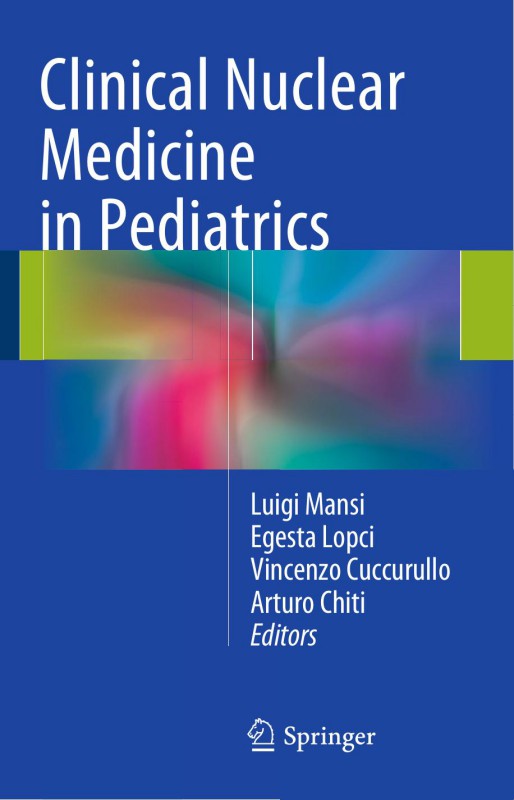
Product details:
ISBN 10: 3319213717
ISBN 13: 9783319213712
Author: Luigi Mansi, Egesta Lopci, Vincenzo Cuccurullo, Arturo Chiti
This book provides a comprehensive state-of-the-art review of pediatric nuclear medicine, encompassing both diagnostic and therapeutic applications. Detailed attention is paid to the role of FDG PET-CT within oncology, but a variety of other long-established or less frequently used diagnostic procedures are also covered. Each indication is critically discussed from a clinical perspective, with analysis of benefits and limitations and comparison against the information yield of alternative techniques. The coverage of therapy based on radiopharmaceuticals includes the most relevant current strategies, including those utilizing radioiodine, MIBG, or radiolabelled peptides. In addition, issues concerning the radiation risk of nuclear medicine procedures in children are addressed. All chapters have been written by international experts and include the most up-to-date scientific and clinical information.
Clinical Nuclear Medicine in Pediatrics 1st Table of contents:
1: Peculiar Aspects and Problems of Diagnostic Nuclear Medicine in Paediatrics
1.1 Nuclear Medicine as Molecular Imaging
1.2 Cost/Effectiveness in Diagnostic Imaging
1.3 Cost/Effectiveness of Nuclear Medicine in Paediatrics
1.3.1 General Capabilities of NM
1.3.2 General Limitations of Nuclear Medicine
1.4 Technical Problems of NM in Paediatrics
1.4.1 How to Approach the Paediatric Patient in Nuclear Medicine
1.4.2 The Paediatric Environment in Nuclear Medicine
1.4.3 Patient Preparation
1.4.4 Patient Positioning
1.4.5 Patient Restraining
1.4.6 Sedation (and Narcosis)
1.4.7 Radioactive Dose
1.4.8 Image Acquisition and Other Technical Points
1.5 Nuclear Medicine in Paediatrics as Compared with Alternative Procedures
1.5.1 Risks and Prejudices
1.5.2 Peculiarities of Alternative Diagnostic Procedures in Paediatrics
1.6 Nuclear Medicine in the Diagnostic Scenario in Paediatrics
References
2: PET/MR in Children
2.1 Introduction
2.2 Available Diagnostic Tools in Pediatric Diseases
2.3 PET/MR in Pediatric Patients
2.3.1 Neurological Disorders
2.3.1.1 Epilepsy
2.3.1.2 Tuberous Sclerosis Complex
2.3.1.3 Brain Tumors
2.3.2 Oncological and Hematological Disorders
2.3.2.1 Lymphoma
2.3.2.2 Histiocytosis
2.3.2.3 Neuroblastoma
2.3.3 Cardiac Disorders
2.3.4 Fever and Inflammation of Unknown Origin
Conclusions
References
3: Current Issues in Molecular Radiotherapy in Children
3.1 Molecular Radiotherapy
3.2 The Care of Children with Cancer
3.3 Staffing and Facilities for Molecular Radiotherapy in Children
3.4 Radiation Protection
3.5 Thyroid Cancer
3.6 Neuroblastoma
3.7 Neuroendocrine Cancers
3.8 Forward Look
References
4: Radiation Risk from Medical Exposure in Children
4.1 Introduction
4.2 Risk Definitions
4.2.1 LNT Model: Linear No-Threshold Model
4.2.2 The Use of Effective Dose in Epidemiology
4.3 Data on Radiation Risk in Nuclear Medicine
4.3.1 Thyroid Cancer Caused by Diagnostic Exposure of I-131
4.3.2 Thyroid Cancer Caused by Radiation Exposure of the Japanese Atomic Bomb and the Chernobyl
4.3.3 Radiation Risk in Children
Conclusions
References
5: Pediatric Nuclear Medicine in Acute Clinical Setting
5.1 General Consideration
5.2 Brain Death Scintigraphy
5.2.1 Radiopharmaceutical and Image Acquisition
5.2.2 Interpretation
5.3 Pulmonary Emboli
5.3.1 Radiopharmaceuticals and Imaging Technique
5.3.1.1 Perfusion Agent
5.3.1.2 Ventilation Agents
99mTc-DTPA Aerosol
133Xenon
99mTc-Technegas
81mKrypton
5.3.2 Interpretation
5.4 Hepatobiliary Scintigraphy
5.4.1 Radiopharmaceuticals and Imaging Technique
5.4.2 Interpretation
5.5 Lower GI Bleeding
5.6 Meckel Scan
5.6.1 Radiopharmaceuticals and Imaging Technique
5.6.2 Interpretation
5.7 99mTc-RBC Scan
5.7.1 Radiopharmaceuticals and Imaging Technique
5.7.2 Interpretation
5.8 Renal Scan
5.9 Renal Cortical Imaging for Pyelonephritis
5.9.1 Radiopharmaceuticals and Imaging Technique
5.9.2 Interpretation
5.10 Renal Transplant
5.10.1 Radiopharmaceuticals and Imaging Technique
5.10.2 Interpretation
5.11 Bone Scan in Acute Care Settings
5.11.1 Radiopharmaceuticals and Imaging Technique
5.11.2 Interpretation
5.12 Fever of Unknown Origin
5.12.1 Radiopharmaceuticals and Imaging Technique
5.12.2 Interpretation
References
6: Nuclear Medicine in Pediatric Cardiology
6.1 Introduction
6.2 Heart
6.2.1 Radiopharmaceuticals
6.2.2 Stress Testing
6.2.3 Image Acquisition and Processing
6.2.4 Kawasaki Disease
6.2.5 Anomalous Origin of the Left Coronary Artery from the Pulmonary Artery
6.2.6 Transposition of the Great Arteries
6.2.7 Metabolic Syndromes
6.3 Lung
6.3.1 Radiopharmaceuticals
6.3.2 Patient Preparation
6.3.3 Image Acquisition and Processing
6.3.4 Typical Findings
6.3.5 Clinical Indications
References
7: Endocrinology: Diagnostics in Children and Adolescents
7.1 Congenital Hypothyroidism (CH)
7.2 Hyperthyroidism
7.3 Toxic Adenoma
7.4 Primary Hyperparathyroidism
7.5 McCune-Albright
7.6 Congenital Hyperinsulinism
7.7 Pheochromocytoma
References
8: Radionuclide Studies with Bone-Seeking Radiopharmaceuticals in Pediatric Benign Bone Diseases
8.1 Introduction
8.2 Technique
8.3 Sedation
8.4 SPET/TC
8.5 Caveat and Pitfalls
8.6 Clinical Indications
8.7 Take-Home Messages
References
9: Nuclear Medicine in Pediatric Gastrointestinal Diseases
9.1 Ectopic Gastric Mucosa in Meckel’s Diverticulum
9.2 Inflammatory Bowel Diseases
9.3 Appendicitis
9.4 Gastroesophageal Reflux and Esophageal Transit
9.4.1 Gastroesophageal Reflux
9.4.2 Esophageal Transit
9.4.3 Gastric Emptying
9.5 Hepatobiliary Scintigraphy
9.6 Hyperinsulinism
9.7 Protein-Losing Enteropathy
9.8 Colonic Transit
9.9 Gastrointestinal Bleeding
9.10 Hepatoblastoma
References
10: Nuclear Medicine in Pediatric Nephro-urology
10.1 Clinical Context
10.2 Available Techniques
10.3 Nuclear Medicine Procedures
10.3.1 Dynamic Renal Scintigraphy
10.3.1.1 Radiopharmaceuticals
10.3.1.2 Patient Preparation
10.3.1.3 Acquisition
10.3.1.4 Processing
10.3.2 Static Renal Scintigraphy
10.3.2.1 Radiopharmaceuticals
10.3.2.2 Patient Preparation
10.3.2.3 Acquisition
10.3.2.4 Processing
10.3.3 Cystoscintigraphy
10.3.3.1 Acquisition
10.3.3.2 Processing
10.3.4 Clinical Informations
10.3.4.1 Diuretic Renography/Dynamic Renal Scintigraphy
10.3.4.2 Static Renal Scintigraphy
10.3.4.3 Cystoscintigraphy
Suggested Reading
11: The Problem of Cancer in Children
11.1 Introduction
11.1.1 Incidence
11.1.2 Etiopathogenesis
11.1.3 General Principles of Treatment
11.1.4 Peculiarities of Treatment for Neoplasms in Pediatric Age
11.2 Central Nervous System (CNS) Tumors
11.2.1 Epidemiology and Etiology
11.2.2 Clinical Presentation
11.2.2.1 Initial Signs and Symptoms
11.2.2.2 Signs of Endocranial Hypertension
11.2.2.3 Ocular Fundus Anomalies
11.2.2.4 Signs of Brain Herniation
11.2.2.5 Focal Signs
11.2.3 Diagnostic Workup: Instrumental Diagnostics and Staging
11.2.4 Pathology
11.2.4.1 Gliomas
11.2.4.2 Neural and Mixed Glioneuronal Neoplasms
11.2.4.3 Embryonal Neoplasms
11.2.4.4 Germ Cell Tumors
11.2.4.5 Meningiomas
11.2.5 Treatment and Follow-Up
11.2.5.1 Surgery
11.2.5.2 Radiotherapy
11.2.5.3 Chemotherapy
11.2.5.4 Biological Treatment
11.2.5.5 Salvage Therapy
11.2.6 Gliomas
11.2.6.1 Low-Grade Histotypes
11.2.6.2 High-Grade Histotypes
11.2.7 Medulloblastoma (Cerebellar PNET)
11.2.8 PNETs: Pineoblastoma
11.2.9 Ependymoma
11.2.10 Germ Cell Tumors (GCT)
11.2.11 Brainstem Tumors
11.2.12 Atypical Teratoid/Rhabdoid Tumor (AT/RT)
11.3 Lymphomas
11.3.1 Epidemiology
11.3.2 Clinical Presentation
11.3.3 Diagnosis and Staging
11.3.4 Pathology
11.3.5 Treatment and Follow-Up
11.4 Soft Tissue Sarcomas: Rhabdomyosarcoma
11.4.1 Epidemiology and Etiology
11.4.2 Clinical Presentation
11.4.3 Diagnostic Workup and Staging
11.4.4 Pathology
11.4.5 Treatment and Follow-Up
11.5 Non-Rhabdomyosarcoma Sarcomas (“Non-Rhabdo”)
11.5.1 Epidemiology and Etiology
11.5.2 Diagnostic Workup and Staging
11.5.3 Pathology
11.5.4 Treatment and Follow-Up
11.6 Bone Sarcomas
11.6.1 Osteosarcoma
11.6.1.1 Epidemiology and Etiology
11.6.1.2 Clinical Presentation
11.6.1.3 Diagnostic Workup and Staging
11.6.1.4 Pathology
11.6.1.5 Treatment and Follow-Up
11.6.2 Ewing Sarcoma
11.6.2.1 Epidemiology and Etiology
11.6.2.2 Clinical Presentation
11.6.2.3 Diagnostic Workup and Staging
11.6.2.4 Pathology
11.6.2.5 Treatment
11.7 Neuroblastoma
11.7.1 Epidemiology and Etiology
11.7.2 Biological–Molecular Characterization
11.7.3 Diagnostic Workup and Staging
11.7.4 Treatment
11.8 Thyroid Cancer
11.8.1 Differentiated Thyroid Carcinoma
11.8.1.1 Epidemiology and Etiology
11.8.1.2 Clinical Presentation and Diagnosis
11.8.1.3 Special Considerations
11.8.1.4 Therapy
11.8.2 Medullary Thyroid Carcinoma
11.9 Melanoma
11.9.1 Epidemiology and Etiology
11.9.2 Clinical Presentation and Diagnosis
11.9.3 Therapy
11.10 Wilms’ Tumor
11.10.1 Epidemiology and Etiology
11.10.2 Clinical Presentation
11.10.3 Diagnostic Workup and Staging
11.10.4 Pathology
11.10.5 Treatment
11.11 Germ Cell Tumor (GCT)
11.11.1 Epidemiology and Etiology
11.11.2 Clinical Presentation
11.11.3 Diagnostic Workup and Staging
11.11.4 Pathology
11.11.5 Treatment
11.12 Nasopharyngeal Carcinoma
11.12.1 Epidemiology
11.12.2 Clinical Presentation
11.12.3 Diagnosis
11.12.3.1 Pathology
11.12.3.2 Staging
11.12.4 Treatment and Prognosis
11.13 Retinoblastoma (RB)
11.13.1 Epidemiology and Etiology
11.13.2 Clinical Presentation
11.13.3 Diagnostic Workup and Staging
11.13.4 Pathology
11.13.5 Treatment
11.14 Langerhans Cell Histiocytosis (LCH)
11.14.1 Epidemiology and Etiology
11.14.2 Clinical Presentation
11.14.3 Diagnosis and Staging
11.14.4 Pathology
11.14.5 Therapy
11.15 Hepatoblastoma (HB) [58]11.15.1 Epidemiology and Etiology
11.15.2 Clinical Presentation
11.15.3 Diagnostic Workup and Staging
11.15.4 Pathology
11.15.5 Treatment
References
12: Lymphoma
12.1 Hodgkin Disease
12.1.1 Staging HD
12.1.2 Treatment Response and Follow-Up
12.2 Non-Hodgkin Lymphoma
12.2.1 Staging
12.2.2 Treatment Response and Follow-Up
12.3 Technical Aspects
12.3.1 Timing of FDG Imaging Related to Chemotherapy
12.3.2 Patient Preparation
12.3.3 Tracer Injection
12.3.4 PET/CT Acquisition
12.4 Take-Home Messages
References
13: Neuroblastoma
13.1 Introduction to the Clinical Context
13.2 Available Diagnostic Tools in Neuroblastoma
13.3 MIBG Scintigraphy: Technical Aspects
13.3.1 Radiopharmaceutical
13.3.2 Preparation and Interference
13.3.3 Administered Activity
13.3.4 Instrument Specifications
13.3.5 Imaging Procedure
13.4 MIBG Scintigraphy: Clinical Information
13.4.1 Principal Information, Pitfalls, Limitations
13.4.2 Added Value and Clinical Indications
13.4.3 Criteria for Evaluation of Disease Extent
13.5 PET Radiopharmaceuticals for NB
13.6 Available Therapeutic Tools in Neuroblastoma
13.7 131I-MIBG Therapy: Technical Aspects
13.7.1 Radiopharmaceutical
13.7.2 Therapeutic Procedure
13.8 131I-MIBG Therapy: Clinical Application
13.8.1 MIBG as Monotherapy in Resistant/Recurrent Disease
13.8.2 MIBG as Front-Line Therapy
13.8.3 MIBG in Combination with Other Therapies
13.8.4 Side Effects
Suggested Literature
14: Pediatric Sarcomas
14.1 Clinical Information
14.1.1 Rhabdomyosarcoma
14.1.2 Osteosarcoma
14.1.3 Ewing Sarcoma
14.2 Imaging Tests in Pediatric Sarcomas: Overview
14.3 Principal Information Provided by Nuclear Medicine Techniques and Comparison to Other Imagin
14.3.1 Bone Sarcomas
14.3.2 Rhabdomyosarcoma
14.4 Potential New Developments
14.5 Summary and Take-Home Message
References
15: Cerebral Tumors
15.1 Introduction
15.2 Neuroimaging of Brain Tumor
15.3 Advanced MRI Techniques
15.4 Nuclear Medicine Imaging
15.5 18F-FDG PET
15.6 Non-FDG PET-CT
15.6.1 Amino Acid Transport and Protein Synthesis
15.6.2 Proliferation Rate
15.6.3 Somatostatin Receptor-Based PET
15.6.4 Membrane Biosynthesis
15.6.5 Oxygen Metabolism
15.7 Hybrid PET/MRI
15.8 Brain PET/CT Techniques in Children
References
16: Thyroid Cancer in Childhood and Adolescence
16.1 Introduction
16.2 Incidence, Genetic and Biological Behaviour
16.3 Initial Staging and Management
16.4 Imaging
16.5 Surgery
16.6 Radioiodine-131 Ablation and Therapy (RIT)
16.7 Pre-radioiodine Therapy Diagnostic Staging 123I/131I Whole-Body Scintigraphy
16.8 Risk-Adapted Management or Ongoing Risk Stratification
16.9 Recombinant Thyrotropin (rhTSH) Use for Diagnostic RAI WBS and Therapy
16.10 Paediatric Dose of RAI
16.11 Risks of RIT
16.11.1 Second Primary Malignancy (SPM)
16.11.2 Reproductive Issues
16.11.3 Pulmonary Fibrosis
16.11.4 Others
16.12 Practical Aspects
16.13 Thyroid Hormone Suppression
16.14 Follow-Up
16.14.1 Elevated Tg or Recurrence on RAI WBS
16.14.2 Elevated Tg But No Evidence of Disease on Diagnostic WBS
16.14.3 Management of Advanced DTC and Refractory Disease
Conclusion
References
17: Other Neoplasms
17.1 Hepatoblastoma
17.2 Desmoplastic Small-Round-Cell Tumor
17.3 Langerhans Cell Histiocytosis
17.4 Adrenocortical Carcinoma
17.5 Summary
References
18: Diagnostic Imaging in European Eastern Countries: a Russian Experience
18.1 Introduction
18.2 Nuclear Medicine (NM)
18.3 Nuclear Medicine at the Scientific Center of Children’s Health (SCCH)
18.4 Functional Radionuclide Kidney Examination
18.5 Radionuclide Hepatography
18.6 Radionuclide Cardiac Pathology Diagnosis
18.7 Radionuclide Pulmonary Pathology Diagnosis
18.8 Radionuclide Skeletal System Pathology Diagnosis
People also search for Clinical Nuclear Medicine in Pediatrics 1st:
clinical nuclear medicine physics with matlab
clinical nuclear medicine physics with matlab a problem solving approach
clinical nuclear medicine in neurology
clinical nuclear medicine editor in chief
what diseases can be treated with nuclear medicine
You may also like…
eBook PDF
Orthopedic Nuclear Medicine 2nd Edition by Abdelhamid Elgazzar ISBN 9783319561677 3319561677

